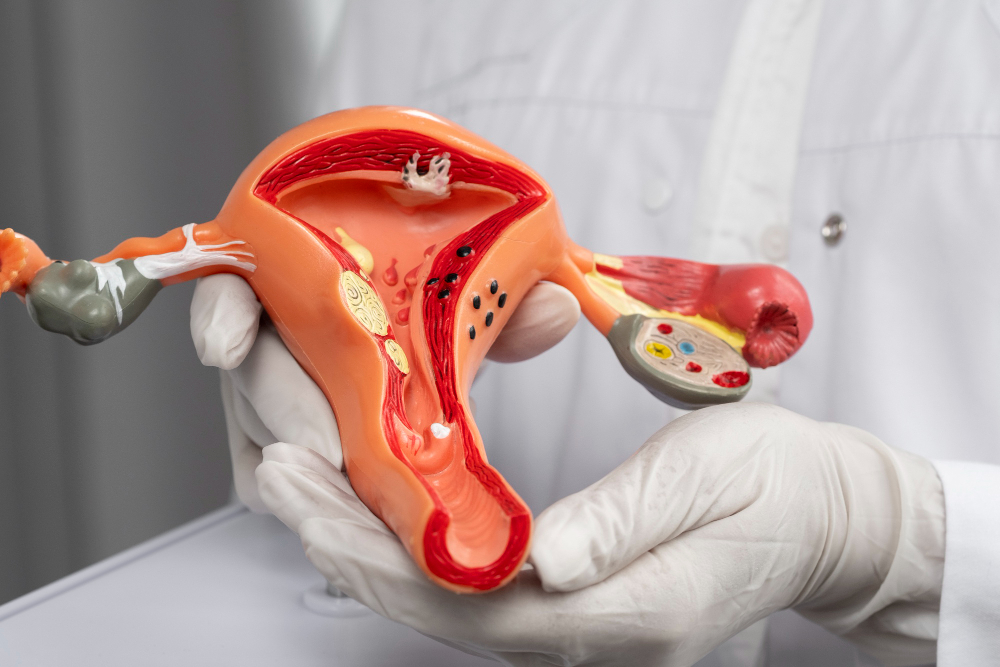What is Hysteroscopic Myomectomy?
Hysteroscopic Myomectomy is a minimally invasive surgical procedure to remove uterine fibroids (myomas) that are located inside the uterus. Using a hysteroscope – a thin, lighted telescope inserted through the vagina and cervix – the surgeon can view and remove fibroids without any abdominal cuts. This technique is primarily used for submucosal fibroids, which distort the uterine cavity and often cause heavy menstrual bleeding or fertility issues.
At Khobragade Multispeciality Hospital, our experienced gynaecological surgeons use advanced hysteroscopic equipment ensuring precision, safety, and optimal outcomes. We focus on minimally invasive treatments to enhance patient comfort, preserve fertility, and promote faster healing.

Symptoms Indicating the Need for Hysteroscopic Myomectomy
Women with fibroids suitable for hysteroscopic removal may experience:
- Heavy or prolonged menstrual bleeding
- Intermenstrual spotting or bleeding
- Anaemia due to excessive bleeding
- Infertility or difficulty in conceiving
- Recurrent miscarriages
- Pelvic pain or pressure symptoms
- Frequent urination if fibroids press on the bladder
Procedure or Treatment
During a hysteroscopic myomectomy:
- The procedure is done under general or regional anaesthesia.
- The hysteroscope is gently inserted through the vagina and cervix into the uterus.
- Saline or glycine fluid is used to expand the uterine cavity for better visibility.
- Special surgical instruments attached to the hysteroscope cut the fibroid into small pieces and remove it.
- There are no external incisions, leading to faster recovery.
- Most patients go home the same day or after a short hospital stay.
Prevention
While fibroids cannot always be prevented, certain lifestyle measures can reduce their growth risk:
- Maintaining a healthy weight
- Eating a balanced diet rich in fruits, vegetables, and whole grains
- Regular physical activity
- Managing conditions like high blood pressure
- Regular gynaecological check-ups to detect fibroids early
Types of Hysteroscopic Myomectomy
There are mainly two types based on technique:
- Resectoscopic Myomectomy: Uses a resectoscope with an electrical loop to shave off and remove the fibroid.
- Morcellation Myomectomy: Uses a morcellator to cut larger fibroids into smaller pieces for removal.
Benefits of Hysteroscopic Myomectomy
- Minimally invasive with no abdominal cuts
- Shorter hospital stay and faster recovery
- Preservation of the uterus, beneficial for women desiring future pregnancies
- Reduced postoperative pain
- Immediate improvement in symptoms like heavy bleeding
- Low risk of complications compared to open surgeries
